Chile Pasilla
Chile pasilla is an extremely popular and widely utilized chile in Mexican cuisine. Find out everything you need to know in this detailed guide, including what it is, how to toast and rehydrate it for recipes, and where to find it.

What is chile pasilla?
Chile pasilla is the dried form of the chilaca pepper and belongs to the Capsicum annuum species. The chilaca pepper is a long and narrow dark green pepper that turns to a deep brown once dried.
Chilaca and pasilla peppers are native to Southern North America and Northern South America, but they are primarily grown and used in Mexico. They usually grow to 6-9 inches long and about 1 inch in diameter.
Chilaca peppers are dried into pasilla peppers either under the sun or in a dehydrator. They can then be ground or rehydrated and used in many different recipes, from soups and stews to salsas.

Flavor profile
The pasilla pepper is known for its mild to medium heat level and its unique flavor profile, characterized by notes of berries, cocoa, raisins, and herbs. I find the aroma to be quite fragrant and personally think it smells like prunes.
The slightly smoky, earthy, and rich taste makes it a go-to for various salsas, moles, soups, and stews. It gives these recipes a robust, full-bodied flavor.
Spice level
In terms of spiciness, the chile pasilla is generally considered mild to medium. It measures around 1,000-2,500 Scoville Heat Units (SHU) on the Scoville Scale.
Its heat is not overpowering but provides a gentle warmth that complements its other flavor notes. The best comparison would be the jalapeno pepper, which averages around 5,000 SHU.

Health benefits
Pasilla chiles contain many vitamins and minerals, like vitamins B2, B6, A, iron, and fiber. All of these nutrients contribute to increased brain function, energy production, eye health, and more.
There is an additional compound found in spicy chiles, called capsaicin, that is particularly beneficial for a few reasons. Capsaicin is responsible for the spiciness of pasilla peppers, but it has also been shown to promote heart health, reduce inflammation, and increase metabolism.
Cooking with pasilla peppers
Cooking with pasilla peppers can add a unique depth and complexity to a variety of soups, sauces, and marinades. They’re most commonly sold in their whole, dried form, so you’ll need to rehydrate them first.
You can also grind the dried chiles into a powder to season roasted vegetables, tofu, beans, and even popcorn. They pair well with savory ingredients like tomatoes, onions, garlic, and herbs like oregano and thyme.
Learn how to seed and rehydrate pasilla chiles in my video tutorial below!
Recipes
With so many flavor-packed recipes utilizing pasilla peppers, I’ve narrowed down a list of my favorites. Try one of the following recipes:
Storage
Store pasilla chiles (or powder) in an airtight glass container to control moisture levels and keep bugs out. You should also keep them in a cool, dark, and dry environment (like a cupboard or spice drawer) to keep their flavors lasting the longest.
If you don’t have space in your cupboards, it’s best to use an opaque container for storage since light degrades chiles rather quickly.
Buying guide
If you’re looking to cook more Mexican-inspired dishes, you need to have pasilla peppers stocked in your pantry. They should be pliable with a very dark (almost black) appearance.
Brittle or cracked peppers should be avoided if possible because the flavors won’t be as vibrant. On the other hand, extremely soft pasilla chiles may have been in contact with moisture, so they should also be avoided.
While they’re not as easy to find outside of Mexico as some other peppers (like ancho chiles or guajillo chiles), pasilla peppers can usually be found in larger grocery stores near the spice aisles.
If you’re lucky enough to live by a Mexican market or store, pasilla peppers will most certainly be available there. And since we live in such a convenient day and age, you can also order pasilla chiles online.

Substitutions
With a rather unique flavor profile, there are only a couple of good substitutions you can opt for when trying to emulate the flavor of chile pasilla:
- Ancho chiles: More mild in flavor and slightly less sweet, ancho chiles are the preferred choice to use in place of pasilla peppers if you can’t find them.
- Mulato chiles: If you can’t find ancho chiles, mulato is a worthy second choice. Although they can be significantly hotter than anchos, they do provide some sweet, smoky, and chocolate notes similar to pasilla peppers.
Frequently asked questions
If your food comes out bitter after using pasilla peppers, it’s likely because they burned during toasting or the seeds were left in. In some cases, seeds can be very bitter when left in the chiles.
Yes, you can make your own pasilla peppers. All you have to do is purchase chilaca peppers and dry them outside, with a dehydrator, or in the oven at 170 degrees Fahrenheit to make pasilla peppers.
Typically, the chile pasilla variety is not smoked. However, pasilla de Oaxaca chiles are significantly hotter and are smoked during the drying process.
More Mexican chiles
If you’re interested in learning about more popular chiles used in Mexican cooking, check out our other detailed guides:
Dried chiles
Fresh chiles
Watch how to make it
Hungry for more?
If you enjoyed this recipe, please consider leaving a star rating and a comment down below! Your feedback not only helps others discover our blog but also gives us valuable insights from your experience.
Don’t forget to subscribe to our newsletter for the latest recipes, and check out our shop for our top kitchen recommendations. Thank you for supporting BBV!
Recipe

How to Rehydrate Pasilla Chiles
Equipment
- Kitchen shears
- Cast-iron skillet or comal
- Saucepan
Instructions
- Using kitchen shears, cut off the stems of the chiles and cut them open. Remove the seeds and veins and discard.
- Heat a cast-iron griddle or comal over medium, then dry toast them for ~30-60 seconds per side until fragrant.
- Bring a saucepan of water to boil, then turn the heat off, add the pasillas in, cover the pot, and let the chiles rehydrate for 10-15 minutes until they feel soft and pliable.
- Your chiles are now ready to be used in various Mexican soups, sauces, marinades, and moles.
Notes
Nutrition
Note: I’ve updated this post to include new information and helpful tips.
Mitch Chapman is a food writer, photographer, and one of the founders of Broke Bank Vegan. With a background in healthcare and the restaurant industry, he has a passion for sharing healthy yet flavorful plant-based food.


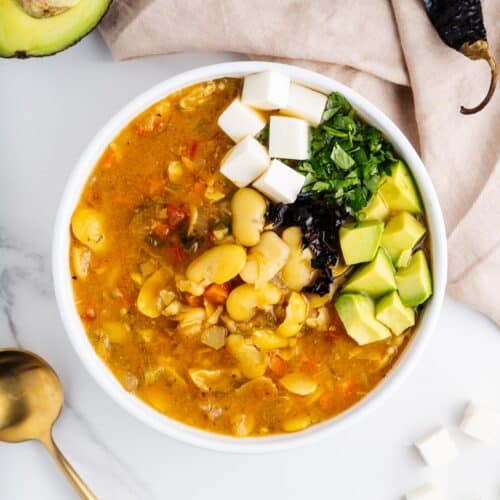
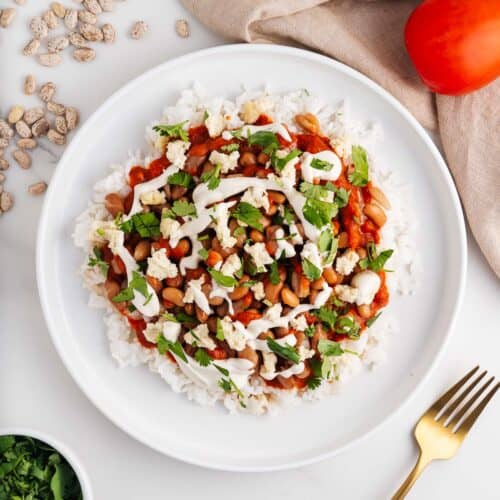
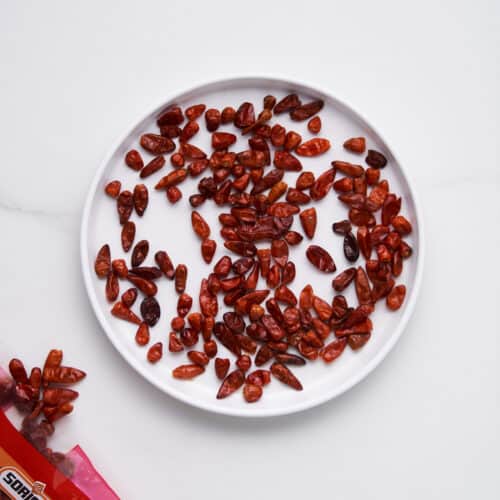


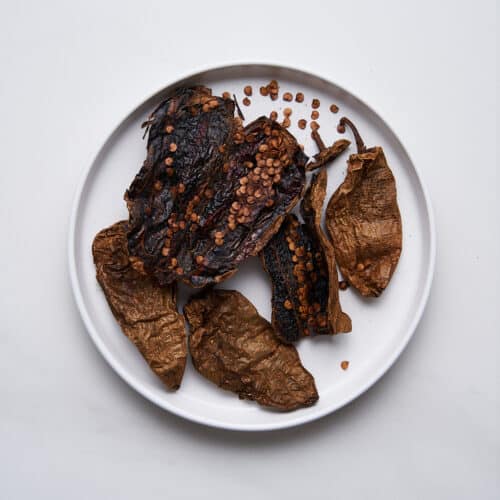



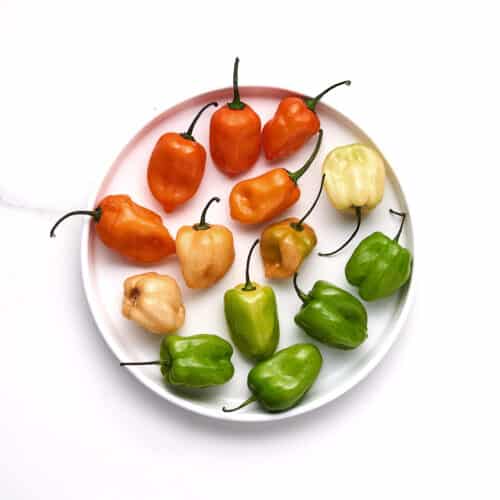


This is exactly what I was looking for, although I question the nutrition information. 345 calories seems like the appropriate number for a wheelbarrow full of pasillo chiles. Anyway, thanks for the great information about Mexican chiles.
That’s great to hear! We’re glad it was helpful. But yes, 345 is accurate! Each one has about 24-25 calories and there are about 14-15 in 100 grams.
Thanks for the great information. The comparative scale is very useful, although, to my unschooled palate and experience, it is very approximate.
Hi George!
We are happy you found the article helpful! Yes, the Scoville scale is just an approximate to give you a general idea of the chile heat. The spiciness of peppers varies greatly, even within the same type. It’s always best to do a taste test to determine your tolerance level.